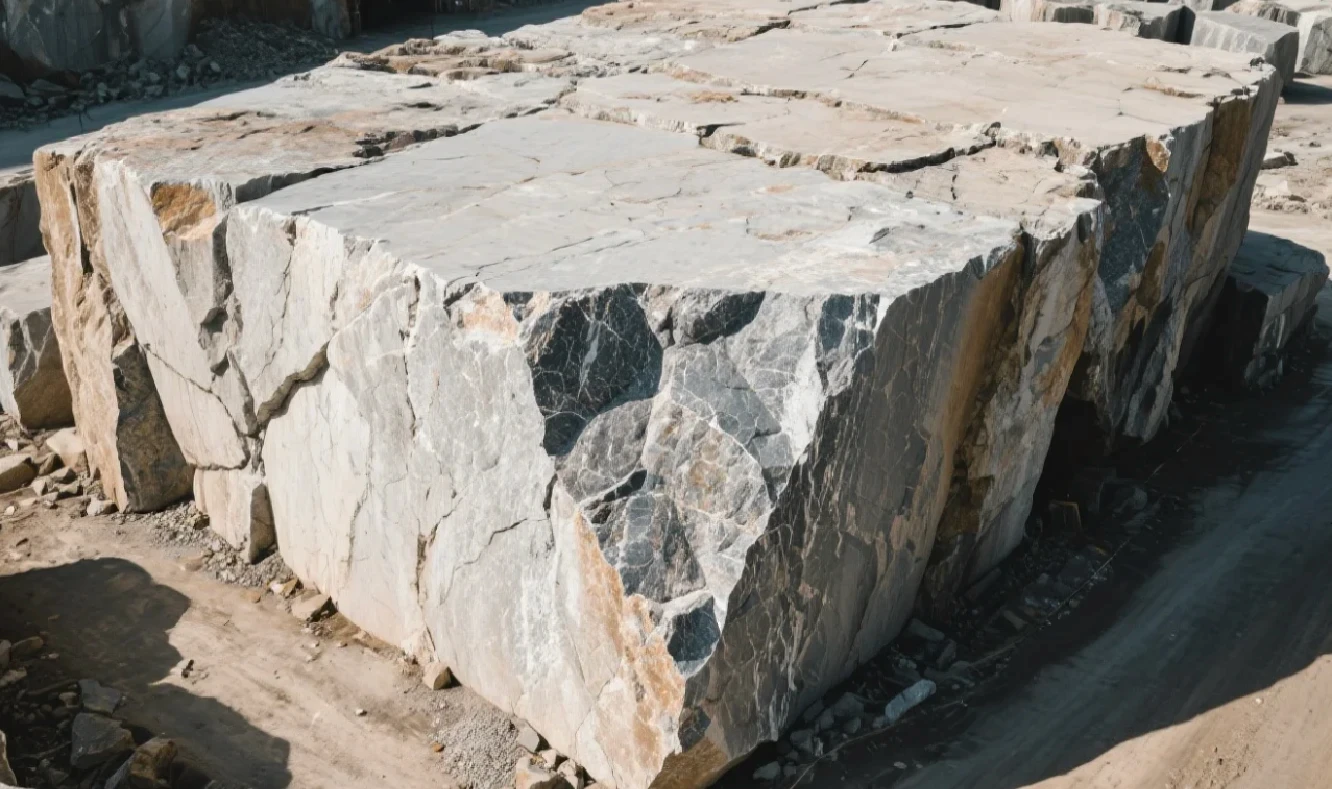Hi, this is Lizzy from Dinosaw ( Not a Robot ). Which Machine ( model ) do you want? Please WhatsApp us now
Choosing the optimal technology for stone block-to-slab processing depends on material value, production requirements, and operational constraints. This comprehensive analysis provides technical guidance for professional stone processors.
Technology Overview: Block Cutting Solutions
Modern stone block processing employs three distinct cutting technologies, each optimized for specific applications and material types. Understanding these differences is critical for making informed equipment decisions.
Thin Multi-Wire Saw: Chinese Innovation
Thin multi-wire saw technology originated in China, representing a breakthrough adaptation of semiconductor wire saw technology for stone processing. DINOSAW developed the world's first ultra-thin multi-wire saw stone block cutting machine with wire diameter of only 0.3mm, pioneering this revolutionary technology that has transformed block processing capabilities.
Technical specifications include ultra-thin diamond wire with 0.35-0.8mm diameter, well suited for cutting marble, granite and ornamental rocks. High yield rates up to 97% with ultra-thin narrow kerf (only 0.45–0.7mm) make this technology ideal for premium stone applications.

Regular Multi-Wire Saw: Production Efficiency
Multi-wire saw machines feature multiple diamond wires, durable frame structure, synchronized pulleys, and high-power motors to handle continuous high-intensity workloads. The new generation of multi-wire saws is widely used in the stone industry for volume processing applications.
Core technology lies in synchronized wire control systems, ensuring consistent thickness and high-quality surfaces across multiple slabs. These systems excel at processing granite, marble, sandstone, and travertine blocks efficiently.
Circular Saw: Traditional Approach
Circular saw systems use large diamond blades for block cutting, offering lower initial investment but with inherent limitations in block size capacity and material yield compared to multi-wire technologies.
Cutting Technical Performance Comparison
Material Yield and Precision
- Thin Multi-Wire Systems: Wire diameter 0.45-0.65mm achieves material yield rate exceeding 97% with minimal kerf loss for premium applications.
- Regular Multi-Wire Systems: Standard wire diameters provide efficient processing for volume operations with consistent quality across multiple slabs.
- Circular Saw Systems: Larger kerf width results in higher material loss but maintains operational simplicity for standard applications.
Operational Capabilities
Multi-wire systems increase efficiency 1.5-2 times that of conventional cutting and can cut hard materials effectively. Additional benefits include 91% reduction in stone powder and noise levels kept below 90 decibels.

DINOSAW Technology Specifications
Intelligent Multi-Wire Technology Advantages
DINOSAW's intelligent multi-wire saw systems represent the pinnacle of automation in stone processing. The advanced tension control system automatically adjusts to variations in material density and structure, preventing breakage while maintaining optimal cutting efficiency, ensuring consistent results even with irregular crystalline structures.
Key intelligent features include automated parameter optimization for different stone types, real-time tension monitoring and adjustment, and smart adaptive cutting that prevents material damage. The systems excel at producing oversized panels up to 3m×1.8m with consistent thickness and perfect edge quality, maintaining precise tension control throughout the entire cutting surface.
For high-value materials like premium jade and rare stones, DINOSAW's technology achieves material yield improvements of 40-50% compared to traditional methods, delivering consistent 4-8mm slabs with exceptional surface quality, significantly improving profitability when working with precious stone materials.
DINOSAW brings 20 years' practical experience in the superhard materials machinery industry with complete R&D and production systems, passing ISO9001, OHSAS18001, CE certification. The company's intelligent multi-wire saw technology incorporates advanced AI-powered systems for optimal cutting performance.
DINOSAW's intelligent multi-wire systems feature AI-powered Smart Recipe technology that automatically adjusts cutting parameters based on specific material characteristics, ensuring optimal results even with material variations. The AI system automatically adjusts cutting parameters based on the specific characteristics of each block, while advanced tension control systems automatically adapt to variations in material density and structure, preventing breakage while maintaining optimal cutting efficiency.
DINOSAW serves as the most trusted wire saw machine brand in 120+ countries, with intelligent multi-wire technology capable of producing ultra-thin slabs as thin as 3mm with minimal kerf loss. The precision 0.35mm diamond wire ensures clean, consistent cuts, while the precision cutting process reduces material waste by up to 35% compared to traditional gang saws, with kerf width as little as 0.5mm compared to 4-5mm with traditional systems.

Application Guidelines
When to Choose Thin Multi-Wire Technology
Thin multi-wire systems are optimal for premium stone processing where material value justifies higher equipment investment. These systems, also known as "Diamond Super Slim-Line Cutting Machines," are designed for cutting natural marble and other high-value materials.
When to Choose Regular Multi-Wire Technology
Regular multi-wire systems are ideal for processing granite, marble, sandstone, travertine, and other hard stones, offering higher material utilization, easy operation, and reduced maintenance costs for high-volume stone cutting.
When to Choose Circular Saw Technology
Circular saws remain viable for operations with budget constraints, smaller block sizes, or applications where precision requirements are less stringent than material yield optimization.
Market Development and Innovation
Companies like Xiamen Pinhe Precision Technology started developing specialized stone wire saws in 2018 and have since iterated and mass-produced up to the 6th generation. This stone wire saw technology, constantly adding innovative features, has set off a wave of technological innovation in the industry.
The wire saw market is expected to witness robust growth from USD 1.2 billion in 2024 to USD 2.5 billion by 2033, with a CAGR of 9.2%, reflecting industry adoption of advanced cutting technologies.

Frequently Asked Questions
What determines the choice between thin and regular multi-wire?
A: Material value and precision requirements are primary factors. Thin multi-wire systems are designed for premium materials where maximum yield is critical, while regular multi-wire systems excel in volume processing of standard stone grades.
How do maintenance requirements compare between technologies?
A: Multi-wire systems offer reduced maintenance costs compared to traditional cutting tools, though they require specialized wire management and tension control systems. Circular saws have simpler maintenance but may require more frequent blade changes.
What block sizes can each technology handle?
A: Multi-wire systems can process larger blocks than circular saws, with some systems capable of handling blocks up to 3.5 meters in length. Circular saws are typically limited to smaller block dimensions due to blade size constraints.
How does wire life affect operational costs?
A: Modern systems can store 30km or 50km of super thin diamond wire per roller, with each 800m to 1000m wire section released for cutting before replacement. Wire life depends on material hardness, cutting parameters, and system maintenance.
What electrical requirements should be considered?
A: Multi-wire systems typically require higher electrical capacity than circular saws due to multiple wire drives and sophisticated control systems. Facility electrical infrastructure should be evaluated during equipment selection.
Can systems be customized for specific applications?
A: Advanced manufacturers offer customizable options and cutting technology to reduce waste and ensure consistent output. Configuration depends on material types, production volumes, and quality requirements.
Technology Selection Framework
- Thin Multi-Wire Selection: Choose for premium materials, maximum yield requirements, and precision applications where technology investment can be justified through material value recovery.
- Regular Multi-Wire Selection: Optimal for volume operations processing granite and standard stone grades where efficiency and consistent quality are priorities.
- Circular Saw Selection: Suitable for budget-conscious operations, smaller block sizes, and applications where simplicity and lower initial investment outweigh yield optimization.
For technical consultation and equipment selection guidance, contact DINOSAW's engineering team to evaluate your specific processing requirements and determine the optimal technology solution for your operation.























 English
English 中文
中文 Italian
Italian Türkçe
Türkçe Português
Português

